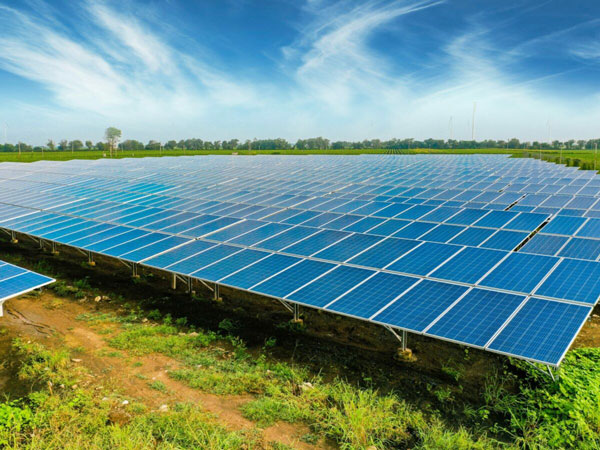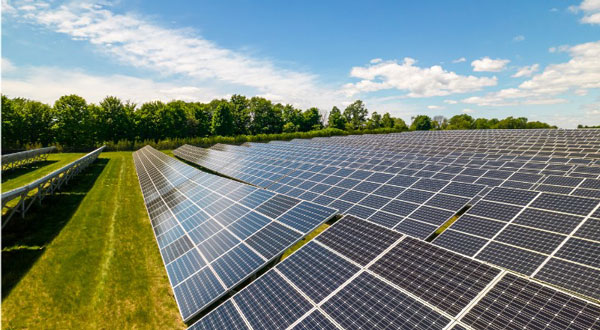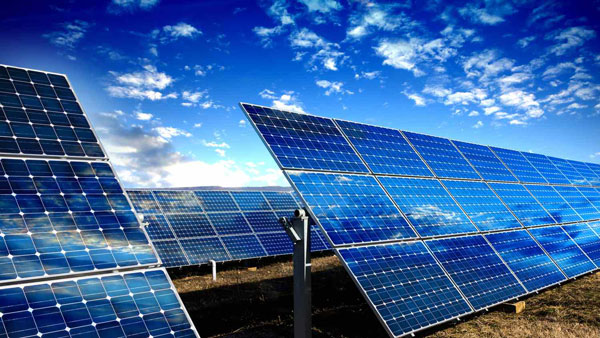Evaluate Solar Panel Efficiency
Assessing solar panel efficiency is critical if you want the most bang for your buck. Monocrystalline panels are also usually higher efficiency, 15-23%. The greater efficiency can be especially important if you have limited roof space because higher-efficiency panels convert more sunlight to electricity. So, for example, a 300-watt monocrystalline panel could likely take up less room and provide the same amount of power as a larger polycrystalline panel.
Types of Panels Efficiency Ratings
Monocrystalline panels are more efficient as they are made in a pure silicon form. SunPower's X-Series panels, for instance, have a maximum efficiency of 22.8%, one of the best available. Polycrystalline panels, on the other hand, have efficiencies usually in the range of 13-16%. It's silicon pieces melted together, which sort of makes them less efficient but also, way cheaper.
The Efficiency of Space Required to Accommodate the Lifestyle
High efficiency panels like monocrystalline use less number of panels to generate the requisite energy for your needs. If you need a 5kW system, monocrystalline panels may only require 16 and polycrystalline panels 20. This difference can have a large effect on the total space needed for installation, which is why monocrystalline panels are better when you have limited roof space.
Real-World Performance
Performance may vary per compatible location and environmental conditions. Monocrystalline (or single-crystalline) panels are generally more efficient in low-light conditions, which is quite important during overcast days, or in regions that get less sun. SunPower Panels can be a great source of energy for homeowners and businesses since they are very efficient but Poly-Crystalline panels are much cheaper even though they are not as efficient.
Degradation Rates
Just like how all solar panels degrade over time and lose efficiency. This degeneration is around 0.3% to 0.5% per year for monocrystalline panels. This implies that even after 25 years, a monocrystalline panel could work as long as 85-90% of its initial performance. Polycrystalline panels degrade at a slightly faster pace of 0.5% to 0.8% annual, that will not breakdown their performance more in the same span of time.
Manufacturer Variations
Even the same type of panels with a different manufacturer will offer different efficiency levels. As an example, LG's monocrystalline NeON R panels have an efficiency of up to 22%, while other manufacturers might sell identical but slightly less efficient monocrystalline panels at a lower price. Cost-performance wise, this makes it important to compare individual models and brands.

Consider Panel Size And Roof Compatibility
1 Panel sizewidth (7.6 panel installation) width of the roof 35 350Considering panel size and compatibility with your roof is very important for proper solar panel installation. Monocrystalline panels are more efficient also so take up less space, which is perfect when you have a smaller roof area to work with. For instance, a 5kW monocrystalline system would take around 350 square feet, and the same installed with polycrystalline panels might need 450 sq. ft.
Investigate Roof Orientation and Tilt
Your solar panels will operate most efficiently if they are positioned with roof orientation and pitch in mind. Roof surfaces facing south in the Northern Hemisphere receive the most sunlight and roofs are typically emerged as important solar asset. In general, the best tilt angle for solar panels is similar to your latitude. As an example, if your house is at Latitude 30 degrees then the perfect tilt angle for your panels in turn is 30 degrees.
Evaluate Current Vegetation and Obstacles
Tree shading, chimneys, or even your neighboring buildings might preventenable Solar Rooftop Panels from soaking direct sunlight. ShadingThere are tools available to help assess shading, such as Solar Pathfinder, or Solmetric SunEye. Your roof should not have significant shading between 9 AM 3 PM as this is when the sun shines brightest. In fact, even a tiny amount of shade falling on one panel can make a huge difference to the performance of the overall system.
Structural Integrity
The most important step, however, comes before you even start the installation: diagnosing your roof for any structural problems. A certified roof inspection can also tell you if the rooftop will be able to handle the extra load that comes with having solar panels installed. Each monocrystalline panel weighs about 40 pounds and a standard installation is likely to have around 20-25 panels. Because you need to have a roof that can support all this dead load, else your home will suffer from severe damages.
County and HOA Approval
Your local building codes and HOA regulations can affect the way your solar panels are installed. Contact local authorities or your HOA for any limitations or prerequisites. Different areas may have zoning laws that state where and how you can put solar panels, which will affect the kind of panel and installation method you choose.
Roof Material Compatibility
However, the method you need is also dependent on the type of roofing material and this can impact installation. Solar Panel Installation Roof Types Solar panels fit on many types of roof, such as asphalt shingles (shown), metal and tile. All those materials need the special mounting systems. As an example, asphalt shingle roofs are easy to install, but tile roofs will likely require unique mounting brackets to avoid damaging them.
Roof Maintenance
Future Roof Maintenance, or Replacement Solar panels on a roof solar home and investment costs Installing solar panels over a roof that will need changing in the near future can lead to extra expenses. If you can possibly time it to install the solar panels in conjunction with a needed roof replacement, even better - that way everything comes off at one time! Roofing: A lot of solar companies now offer their roofing services, or have partnered with other roofing companies to make the process easier.
Check Durability And Warranty
One of the main things you should look out for while choosing a solar panel is its durability. Solar panels must be hardy enough to cope with cold, heat, hail and high wind conditions. Search for panels rated at a High Wind and Snow Load rating of ~2400-5400 Pascals. It comes with a 25 year warranty on High quality panels. Make sure the guarantee consists of the item and efficiency, ensuring 80% effectiveness over 25 years.
Compare Efficiency Ratings
Efficiency ratings show how well a panel converts sunlight into electricity; More efficient panels can also be useful, especially if you want to get more power in a limited space. Solar modules with efficiencies over 22% can be found among panels from SunPower and LG, while the norm is around 15-18%. If you have limited space or desire the most output, choose higher efficiency panels.
Cost And Value For Money Review
Affordability is a major factor here. The price can vary between $2.50 and $3.50 per watt Compare the initial costs to electricity bills on 20 year savings and RETIREMENT OF ALL THE INITIAL COSTS with return on investment (ROI). Think about incentives and tax credits that could reduce the upfront costs by enough to make it more worthwhile for you.
Conduct a Manufacturer Analysis
Your manufacturer should have a good reputation Check on the organization of which you want to purchase a retirement annuity with their history and client reviews. Panasonic, LG and SunPower are companies with outstanding quality and reliability reputations. Go for a supplier who is well-reputed for high-quality parts with a solid experience base and complete client support.
Determine Installation And Maintenance Needs
The cost of long-term performance and maintenanceRuleContext-Installation. Choose long lasting, low maintenance panels We highly recommend professional install to maximize the best performance and warranty validity. They need cleaning once in a while since dirt that collects on the surface can reduce efficiency and shorten the lifespan of solar panels.
Performance In Any Given Conditions
Different Conditions Suit Specific Solar Panels Monitor shading tolerance, low light performance and operating temperature coast of the panels. For example, microinverters or power optimizers can increase performance in shaded locations. In areas with high temperatures (45°C and above), it is advisable to use panels having a good temperature coefficient (close to -0.3%/°C), in order that they can keep their efficiency.
Assess Aesthetic Impact
One of the things you need to consider when choosing a solar system is how it looks on your property. The panels come in many different colors and sizes, as well as designs. Black panels with black frames are generally going to be more stylish than blue panels with silver frames however. SunPower and LG offer a tasteful look that you can not tell on your roof is an added bonus. Take into account the number of panels and how they lie to best match your roof patterns.
Check Durability And Warranty
The durability of a solar panel is a key consideration when selecting it. You have to consider factors like hail, high winds, and extreme temperatures as panels are exposed to harsh environmental conditions. Find a Panel With a High Wind and Snow Load Rating(usually around 2400-5400 Pascals) Some of the high-quality panels came with 25-year warranty. Particularly that the warranty covers both product and performance guaranteeing at least 80% power after 25 years.
Compare Efficiency Ratings
Efficiency - Refers to how good a panel is at turning sunlight into electricity. While high efficiency panels are better, it is even greater when the space is limited. Solar panels from the likes of SunPower and LG can be 22%-plus efficiency, and even average-grade panels will have resistances in the mid teens to low 20s. If you are space constrained or want to maximize the amount of energy generated, then opt for high efficiency panels.
Check ROI and Cost
Price is another factor. Cost: Between $2,50 and $3.50 per watt This turnkey EV infrastructure solution helps you to run an ROI (return on investment) calculations vs the initial cost vs what you will save over time on electricity bills. Think about subsidies or rebates that may considerably lower the upfront price, bolstering your ROI[5]).
Review Manufacturer Reputation
The credibility of the manufacturer The history of the company and the reviews from customers. These are companies like Panasonic, LG and SunPower that have built reputations for product integrity and longevity. Locate Makes You Could Depend uponSelect companies having a strong reputation and customer services.
Evaluate Installation And Maintenance Demands
Long-tarmac-terms-threat. Installation and maintenance both also have long-term performance and cost implications. Choose low-fuss, easy-to-place panels. It is best to have the components assembled at the factory recommended hub equipped professional installer in order to ensure optimal performance and warranty validity. This includes regular cleaning and energy performance monitoring, which overall maintain panel efficiencies and survival powerloads.
Check How Perform Well in Different Environments
Different Conditions Different with the solar panel performances. Test how the panels cope with shading, low light and high temperatures. An example would be microinverters or power optimizers that can help overcome shading. The temperature coefficients (-0.3%/°C on some panels) are important to keeping the panels efficient in a hot climate.
Calculate Cost-Effectiveness
A determination of this would quickly show that the cost-effectiveness of solar panels is found in their price over time as much as their sticker tag. Let us begin with the initial costs which can vary from $10,000 to $30,000 per residential system, and this cost may depend on how big and what type of panels you are using. Factor in installation, which usually increases the total by an additional $2,000 to $5,000.
Check Durability And Warranty
Longevity for Large Savings Should be capable of withstanding the harshest weather conditions. Consider panels with high wind (2400-5400 Pascals) and durable snow load ratings. Long-term protection: 25-year warranty for product longevity and performance. At 25 years, well-designed panels should offer 80+% efficiency and most warranties guarantee that it will - essentially insuring your investment.
Compare Efficiency Ratings
Efficiency also relates to energy production and overall cost savings. Brands like SunPower and LG have panels with efficiency up to 20-22%: a great way to get more power out of your limited roof space! Regular panels have 15-18% efficiency and are recommendable for large scale projects not limited by area.
Analyze Cost And ROI
The ROI is based on the ability to perform a simple divide and compare, you take the total system cost and compare it to the energy savings; Savings determined by your local providers electric prices. For example, in California at an average rate of $0.20/kWh, a 6kW system can return around $1,200 per year. That does not count discounts or rebates, which can cut the initial price by 30% or more.
Evaluating Manufacturer Reputation
Make sure to pick a reputed manufacturer hence, reliability. Otherwise monitor customer reviews and industry ratings. Panasonic, LG, and SunPower are credited as toprated goods and solutions. With reputation comes better warranties and stronger customer support, in turn leading to peace of mind.
Determine Installation And Upkeep Needs
Ease of Installation and Maintenance Assess how difficult it is to install and maintain. Choose panels that will not need extensive maintenance like those with self-cleaning coats To get the full benefit of your warranty you need to make sure its installed by a professional. Keeping the air purifiers running at their peak is essential for not only their performance but also a longer life.
Test Performance Under Different Conditions
Performance is subject to environmental processes. Consider how well panels work in low-light environments, under shading, and at extreme temperatures. Devices such as microinverters and power optimizers Increasing the operation on partial shading. -0.3%/°C Temperatur Coefficient (Ideal for hot climates where efficiency is maintained at high temperature)

Review Solar Incentives And Rebates
Realizing There Are Incentives & Rebates That Greatly Reduce The Price Of Solar Panels This is a 26% Federal tax credit on the cost of your solar system called the Investment Tax Credit (ITC). Lastly, but most importantly, this incentive will be brought down to 22% in 2023 so time to act is ticking. Plus, many states offer even more rebates, such as the Solar Initiative in California that pays cash back for putting solar on your home.
Check Durability And Warranty
What you want is a dulable product so You will have long run saving once you set it up. Wear and tear of generating panels due to severe weather patterns. Assure the Panels have various wind (2400-5400 pascals) and snow load ratings. Longevity/Performance: 25-year robust warranty included In the end, guarantees should be at least 80% efficiency after 25 years, securing your investment.
Compare Efficiency Ratings
Efficiency translates into energy production and savings. More space-friendly high-efficiency panels (20-22%) (like SunPower and LG) result in more power per square foot. These panels are also termed as Standard Panels and offer 15-18% efficiency which means they are best suitable to big size installation where space is not a constraint.
Analyze The Cost And ReturnNonNull
When calculating ROI, weigh total system cost against projected energy savings. Savings based on local electricity rates: In California, where electricity rates average $0.20/kWh, a 6kW system will save about $1,200 per year. Incentives and tax credits Incentives often cut the cost of solar by 30% or more.
View Manufacturer Reputation
The reliable manufacturersImage Source: TechSpot The first step is to check customer reviews and industry ratings. Panasonic, LG or SunPower are brands that often come to mind when thinking about quality products and service With a good reputation, you are also more likely to get high-quality warranties and customer service - all of which boils down to your peace of mind.
Consider The Installation And Maintenance Requirements
Ease of installation and maintenance Choose low maintenance panels such as those with self-cleaning coatings Efficiency and warranty requirements demand professional installation. Like all pumping systems all Grundfos submersible pumps require periodic maintenance including cleaning and inspections to maintain optimal performance and ensure a long service life.
They Check Performance in Various Conditions
However, the performance may differ due to environmental variables. It evaluates panels on the bases of Low-light Performance, Shading Tolerance and, Temperature Coefficient. By leveraging top-of-the-line technologies such as microinverters and power optimizers, the system performance under partial shading conditions are further optimized. Solar panels that have lower temperature coefficients, are more durable and efficient in hot climates.



